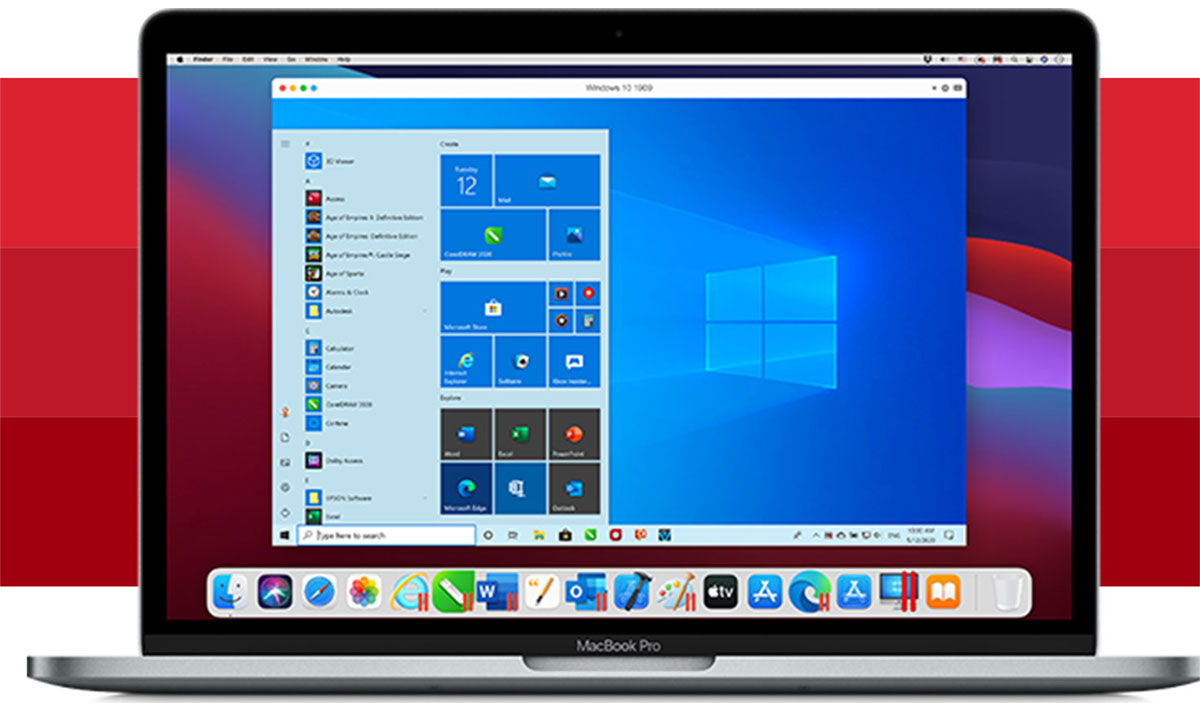

- M1 MAC PARALLELS WINDOWS 11 HOW TO
- M1 MAC PARALLELS WINDOWS 11 INSTALL
- M1 MAC PARALLELS WINDOWS 11 UPDATE
- M1 MAC PARALLELS WINDOWS 11 WINDOWS 10
M1 MAC PARALLELS WINDOWS 11 WINDOWS 10
Even Windows 10 and 11 Preview boot times are snappy, certainly faster than booting up a real Windows PC. From a cold start, in which the app must launch as well as the virtual machine, it’s about double that to resume, but that’s still pretty impressive. On my Intel iMac, Parallels 17 gets very close to instantaneous suspend and resume times, with three seconds to suspend and just two seconds to resume, when Parallels is running.
M1 MAC PARALLELS WINDOWS 11 UPDATE
It works so well, you can even suspend the guest operating system while it’s doing something as critical as applying a software update without doing harm. When they need to work on it again, they just resume it, and the virtual machine wakes up in the same state as before. This takes the current state of the machine running in the host Mac’s memory and saves it to disk (or an SSD). One of the things many Parallel users do frequently is suspend a virtual machine, rather than shutting it down, when they are no longer using it. That’s true on the Intel side for Parallels 17, though I’d have to say that version 16 was pretty damned zippy. But it's at least a potential way forward and if somebody else wants to give it a shot, UTM may be an option.With each annual release, Parallels is touted as being faster than the previous year’s version. I'm not super optimistic about this, since ultimately it'll be running emulated, not under virtualization. This is also possible my error somewhere, but I haven't gone back to figure it out. However, when I rebooted after install, Windows gets angry about not being able to find the "Desktop" for the user, and kind of loses its mind.
M1 MAC PARALLELS WINDOWS 11 INSTALL
I did get it to boot and install Win10 x86. I suspect this is an error on my end, since it was the first thing I tried and I may have misunderstood some of the config. I can't get it to install Win11 x86, because it seems to insist there's an architecture mismatch. I'll write things up better when I have something real to show for it, but so far: I've been working to get Windows x86 to stand up on UTM (which I gather is really just a fancy frontend to QEMU). I took a crack at this when I got my M1 back in December and got nowhere, but now I have progress. I've gone through ~25 Windows 11 snapshots trying to get at least some basic add-ons installed like DAQ, but haven't had any luck

I was able to install base LV with the math toolbox but nothing else.
M1 MAC PARALLELS WINDOWS 11 HOW TO
Hopefully you will have more success than me.ĭid you figure out how to get it installed? I'm currently experiencing the same problems. I recommend you keep ‘Snapshots’ of your Parallels VMs as you get thinks working. But more significantly, every time I install NI-Max, it kills Windows and I am no longer able to boot. LabVIEW does install and I am able to partially open my projects but I have a lot of packages as dependancies and am not able to get VI Package Manager to work. Installing Windows 11 ARM is straightforward. I have an Apple M1 Mac mini and more recently, an M1 MacBook Pro. I have been trying for some time to get this working with the M1 chip.

I have been using Parallels on my Mac to develop LabVIEW (for Windows) code for years and have been very happy with it.


 0 kommentar(er)
0 kommentar(er)
